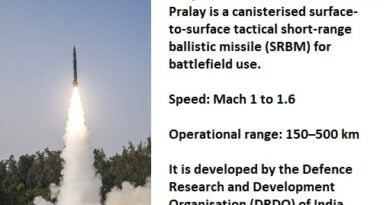Prompt Corrective Action Framework
Context:
The Reserve Bank of India has taken IDBI Bank Ltd out of its prompt corrective action list after it found the state-run lender was not in breach of the central bank’s parameters.
- IDBI Bank was placed under the so-called PCA framework in 2017 over its high bad loans and negative return on assets, at a time when Indian lenders battled record levels of soured assets, prompting the RBI to tighten thresholds.
What is Prompt Corrective Action (PCA)?
- Prompt Corrective Action (PCA) is a framework in which banks with weak financial records are placed under the supervision of the Reserve Bank of India.
- The Reserve Bank’s PCA framework was introduced in December 2002 as a structured early intervention mechanism along the lines of the FDIC’s PCA framework. Subsequently, the framework was reviewed by the Reserve Bank keeping in view the international best practices and recommendations of the Working Group of the Financial Stability and Development Council (FSDC) on Resolution Regimes for Financial Institutions in India (January 2014) and the Financial Sector Legislative Reforms Commission (FSLRC, March 2013). The Revised PCA Framework was issued by the Reserve Bank on April 13, 2017 and implemented with respect to the bank financials as on March 31, 2017.
- It aims to check the problem of Non-Performing Assets (NPAs) in the Indian banking sector.
- PCA is intended to help alert the regulator as well as investors and depositors if a bank is heading for trouble.
- The idea is to head off problems before they attain crisis proportions.
- Essentially PCA helps RBI monitor key performance indicators of banks, and taking corrective measures, to restore the financial health of a bank.
- The PCA framework deems banks as risky if they slip some trigger points – capital to risk weighted assets ratio (CRAR), net NPA, Return on Assets (RoA) and Tier 1 Leverage ratio.
- Certain structured and discretionary actions are initiated in respect of banks hitting such trigger points.
- The PCA framework is applicable only to commercial banks and not to co-operative banks and non-banking financial companies (NBFCs).
- It may be noted that of the 21 state-run banks, 11 are under the PCA framework.
How does a Prompt Corrective Action work?
The PCA framework allows a regulator to place specific restrictions like stopping payment of dividends or setting up new bank ranches. It also gives powers to place a cap on a bank’s lending limit to one sector.
Other corrective actions are as follows:
- Special audits
- Restructuring operations
- Activation of a recovery plan
- Superseding the banks board of directors
- Brining in new management
A Prompt Corrective Action framework is evoked when certain limitations placed on banks are exceeded; these limitations are based on levels of asset quality profitability, and capital. Another restriction is when the number of negative returns on assets run into four consecutive years.
What are the types of restrictions placed under a PCA?
Under the Prompt Corrective Action Framework there are two types of restrictions
- Mandatory: The restrictions on dividend branch, extensions and directors compensations falls under this category
- Discretionary: Restrictions on lending and deposit are under this category.
An example of mandatory restrictions being imposed were on two banks in the past – IDBI Bank and UCO Bank.
impact of PCA?
Prompt Corrective Actions have the following impact:
- The PCA is an unprecedented, if not exceptional action that impacts the customer relationship with the bank. This is not good in the long run as it will impact the credit history of the bank and will raise questions about its management.
- It can accelerate loss of market loss and further decline the position of public sector banks, allowing foreign or private banks to fill in the gap.
The Government of India feels that the PCA measures are an economic hindrance and thus feel certain norms should be relaxed. In addition it is also perceived that the dispute between the government and the RBI may impact India’s images as an investment destination.
Challenges and Issues
- PCA is an exceptional action and impacts the rating of the bank as well as consumer confidence. This is detrimental in the long run as it impacts the credit history of the bank and raises questions about its management.
- PCA can accelerate the loss of market share and cause further decline of the position of the public sector banks in the financial system in favour of private banks and foreign banks.
- PCA is seen by government as hindering economic growth therefore is arguing for easier lending policies by relaxing the PCA norms and aligning them to global norms.
- The tussle between RBI and government can negatively impact the image of India as an investment destination.
Way Forward
- Narasimham Committee (1998) on structural reforms recommended the merger of Indian banks; consolidated banking industry will be able to better deal with NPA crisis.
- Government should address the core issue of Governance impacting the Banking Sector.
- A formal agency such as Public Sector Asset Rehabilitation Agency (PARA), can be instituted to resolve the large bad debt cases; this step was taken by East Asian countries after they were hit by severe TBS problems in the 1990s.
- The Insolvency and Bankruptcy Code (IBC) mechanism needs to be strengthened to meet global standards with active involvement of the government, regulators, lenders, borrowers and the judiciary.
Source: The Hindu


